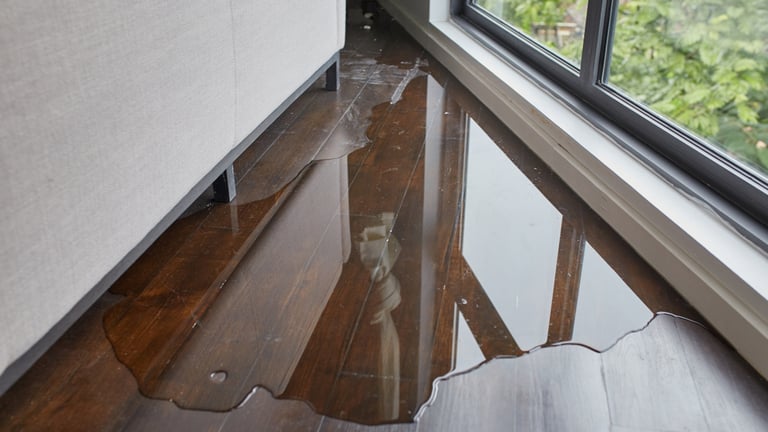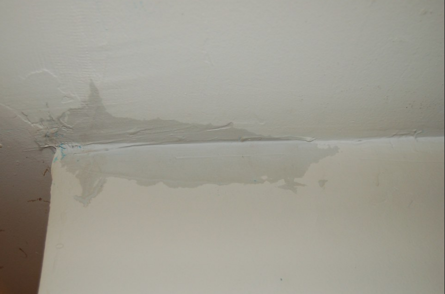Do's and Don'ts During Water Damages Emergency Situations.
Do's and Don'ts During Water Damages Emergency Situations.
Blog Article
Almost everyone seems to have their own individual opinion when it comes to How To Prevent Fire And Water From Ruining Your Holiday Season.

Water gives life, water intrusion on components where it's not meant to be can result in damage. If the water soaks right into your framework, it can peel off away surfaces and also erode the foundation. Mold as well as mildew additionally flourish in a damp setting, which can be dangerous for your health and wellness. Houses with water damages scent moldy and old.
Water can originate from many resources such as typhoons, floods, burst pipes, leaks, as well as sewage system problems. In case you experience water damages, it would be good to know some security preventative measures. Below are a few guidelines on exactly how to manage water damage.
Do Prioritize House Insurance Coverage Insurance Coverage
Water damage from flood as a result of heavy winds is seasonal. However, you can additionally experience a sudden flooding when a malfunctioning pipeline suddenly breaks into your residence. It would certainly be best to have residence insurance coverage that covers both acts of God such as all-natural disasters, and also emergencies like busted plumbing.
Don't Neglect to Turn Off Utilities
In the event of a catastrophe, particularly if you reside in a flood-prone location, it would be suggested to turn off the primary electric circuit. This removes power to your entire house, avoiding electric shocks when water comes in as it is a conductor. Furthermore, do not neglect to turn off the primary water line shutoff. When floodwaters are high, furnishings will certainly move and create damages. Having the main shutoff shut off avoids more damages.
Do Remain Proactive and also Heed Weather Condition Signals
Storm floods can be very unpredictable. Remain prepared as well as aggressive if there is a history of flooding in your community. Pay attention to discharge cautions if you live near a creek, river, or lake. Obtain valuables from the first stage and also basement, after that placed them on the highest possible degree. Doing so minimizes potential home damage.
Do Not Overlook the Roof
You can stay clear of rainfall damage if there are no holes and also leakages in your roof covering. This will certainly prevent water from moving down your wall surfaces and saturating your ceiling.
Do Take Note Of Tiny Leaks
A burst pipeline doesn't occur over night. Generally, there are red flags that suggest you have compromised pipelines in your house. For example, you might observe bubbling paint, peeling wallpaper, water streaks, water spots, or trickling sounds behind the walls. Ultimately, this pipe will certainly burst. Ideally, you must not wait for points to escalate. Have your plumbing repaired before it leads to large damage.
Do Not Panic in Case of a Ruptured Pipeline
When it comes to water damage, timing is crucial. Hence, if a pipe bursts in your home, immediately closed off your primary water valve to reduce off the resource. Call a trusted water damage repair professional for help.
Water provides life, water invasion on components where it's not intended to be can result in damage. Homes with water damages odor moldy as well as old.
Water damage from flooding fees to hefty winds is seasonal. You may see bubbling paint, peeling off wallpaper, water streaks, water discolorations, or trickling noises behind the wall surfaces. When it comes to water damage, timing is essential.
Some Do's & Don't When Dealing with a Water Damage
DO:
Make sure the water source has been eliminated. Contact a plumber if needed. Turn off circuit breakers supplying electricity to wet areas and unplug any electronics that are on wet carpet or surfaces Remove small furniture items Remove as much excess water as possible by mopping or blotting; Use WHITE towels to blot wet carpeting Wipe water from wooden furniture after removing anything on it Remove and prop up wet upholstery cushions for even drying (check for any bleeding) Pin up curtains or furniture skirts if needed Place aluminum foil, saucers or wood blocks between furniture legs and wet carpet Turn on air conditioning for maximum drying in winter and open windows in the summer Open any drawers and cabinets affected for complete drying but do not force them open Remove any valuable art objects or paintings to a safe, dry place Open any suitcases or luggage that may have been affected to dry, preferably in sunlight Hang any fur or leather goods to dry at room temperature Punch small holes in sagging ceilings to relieve trapped water (don't forget to place pans beneath!); however, if the ceiling is sagging extremely low, stay out of the room and we'll take care of it DO NOT:
Leave wet fabrics in place; dry them as soon as possible Leave books, magazines or any other colored items on wet carpets or floor Use your household vacuum to remove water Use TV's or other electronics/appliances while standing on wet carpets or floors; especially not on wet concrete floors Turn on ceiling fixtures if the ceiling is wet Turn your heat up, unless instructed otherwise

I was introduced to that write-up on 5 Home Safety Tips To Reduce The Risk Of Fire And Water Damage through a friend on a different website. Sharing is nice. Helping people is fun. Thanks so much for going through it.
Report this page